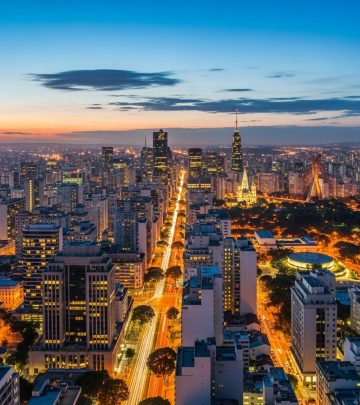Petra: The Rose-Red Wonder of Jordan Revealed
Unveil the timeless mysteries, towering monuments, and vibrant past of Petra—Jordan’s evocative city of stone, carved by the Nabataeans.

Petra: The Jewel of Ancient Jordan
Petra, carved into sandstone cliffs in southern Jordan, stands among the world’s iconic archaeological sites. Once the capital of the Nabataean Kingdom, it is renowned for its spectacular facades, intricate tombs, temples, and the legendary Treasury (Al-Khazneh). Visiting Petra is an immersive journey through millennia of history, sophisticated engineering, and breathtaking desert landscapes. Recognized as a UNESCO World Heritage Site and one of the New Seven Wonders of the World, Petra invites travelers to walk in the footsteps of ancient traders and explorers.
What Makes Petra Special?
- Cultural crossroads: Petra’s strategic location made it a major trading hub linking Arabia, Egypt, and the Mediterranean.
- Nabataean ingenuity: The Nabataeans pioneered water management systems and stunning rock-cut architecture.
- Dramatic setting: Enclosed within canyons and mountains, Petra’s structures appear as if grown from the living rock.
- Global acclaim: Featured in Lonely Planet’s Ultimate Travel List as the world’s #1 bucket-list destination and named a New Seven Wonder of the World.
Approaching Petra: The Legendary Entrance
Petra’s approach is as breathtaking as its monuments. The journey begins through the Siq, a narrow, winding gorge over 1 kilometer long, hemmed by sandstone walls soaring up to 80 meters. The Siq’s colorful, striated rock and subtle Nabataean carvings build anticipation, finally opening dramatically onto the city’s most emblematic monument—the Treasury (Al-Khazneh).
The Siq
- Length: About 1.2 km (0.75 miles)
- Features: Ancient water channels, niches, and reliefs
- Atmosphere: Shaded, cool, echoing with the steps of expectant visitors
The Treasury (Al-Khazneh)
- Facade height: Approx. 40 meters (131 feet)
- Date: Built 1st century BCE
- Function: Believed to be the mausoleum of King Aretas IV
- Highlights: Greek-influenced ornamentation, imposing columns, legends of hidden treasures
The Treasury’s iconic façade glows rose-gold in the morning sun, serving as the ultimate symbol of Petra for travelers and film-makers alike (famously featured in Indiana Jones and the Last Crusade).
Exploring the Heart of Petra
From the Treasury, the site widens into an open expanse dotted with astonishing archaeological wonders. Each section of Petra offers its own allure and historical intrigue.
The Street of Facades and the Theatre
- Street of Facades: Home to over 40 tombs carved directly into the cliff, these monuments display a mix of local and classical architectural styles.
- The Theatre: With capacity for up to 7,000 spectators, this grand amphitheater was built by the Nabataeans then expanded by the Romans, offering insight into Petra’s cosmopolitan culture.
High Place of Sacrifice
- Location: Ascend steep steps left of the Theatre (45-minute climb)
- Highlights: Ancient altar on a plateau, panoramic views over Petra
- Route: Descend on the far side past the Garden Tomb, Roman Soldier’s Tomb, and Garden Triclinium, looping back toward the Street of Facades
Royal Tombs
- Grouping of some of Petra’s most ornate tomb facades cut high into the eastern cliffs
- Urn Tomb: Distinguished by its portico and vaulted chamber
- Palace Tomb: Three stories tall, resembling a grand Hellenistic palace
- Climb to the plateau above the tombs for sweeping city vistas—with luck, a tea vendor may offer a unique viewpoint over the Treasury
The Colonnaded Street
This once-bustling avenue was Petra’s commercial heart. Today, traces of shops, a nymphaeum (public fountain), and city gates line the way, leading west toward major temples and free-standing monuments.
The Temples of Petra
| Temple | Highlights | Notes |
|---|---|---|
| Great Temple | Imposing columns, reconstructed amphitheater, ongoing excavations | Major civic and religious center |
| Temple of the Winged Lions | Distinctive columns, reliefs, and altar | A cross-wadi walk reveals insights into Nabataean worship |
| Qasr Al Bint | Best-preserved freestanding temple, 23 meters high | Likely a major center of Nabataean religion |
Petra’s Culinary Pause: Restaurants and Refreshments
- Nabataean Tent Restaurant: Traditional atmosphere, local salads and hot dishes
- Basin Restaurant: Upscale dining with a buffet of Middle Eastern cuisine
- On-site stalls: Scattered throughout the site, these serve herbal tea, snacks, and refreshing drinks—vital in Petra’s dry climate
Hiking Beyond the Main Trail
Al Habis Hill and Crusader Fort
- Location: Behind the Nabataean Tent Restaurant
- Route: Steps wind around Al Habis hill, with paths looping around for views of the fertile Wadi Siyagh
- Feature: Atop lies a ruined Crusader fort from AD 1116—an atmospheric relic with sweeping panoramas across Petra
- Allow one hour to explore the hill and the fort
The Monastery (Al Deir): A Striking Finale
- Route: From beside the Basin Restaurant, follow the winding path and rock-cut steps up to the Monastery (approx. 45 minutes uphill)
- Facade: 50 meters wide, 45 meters high—a colossal structure surpassing even the Treasury in scale
- History: Built around 86 BCE as a tomb, later repurposed as a church in Byzantine times
- Best time to visit: Late afternoon, when sandstone hues glow with warmth
- Nearby: Walk 10 minutes to two cliff-top viewpoints for sweeping vistas of Petra and, on clear days, the distant Wadi Araba
On the descent, look out for the Lion Tomb, distinguished by weathered lion reliefs at the gully-bottom—an often-overlooked gem.
Essential Petra Visitor Information
- Opening hours: Vary by season; check in advance
- Tickets: Multi-day passes available; the Jordan Pass is recommended for savings on entry fees
- Duration: Allow at least one full day—two if you want to explore off the beaten track
- Dress code: Modest, comfortable clothing and sturdy footwear
- Climate: Summers are hot and dry, winters mild but sometimes wet
- Accessibility: Paths are uneven; camel and donkey rides are common but animal welfare issues are a concern
Top Tips for Visiting Petra
- Arrive early to beat the crowds and experience the Treasury in soft morning light
- Carry plenty of water, sunblock, and a hat for shade
- Consider hiring a licensed guide for in-depth historical context
- Respect local customs and archaeological restrictions
- Avoid riding overworked animals; explore on foot whenever possible
Other Highlights in the Region
- Wadi Rum: The “Valley of the Moon” offers red sand, otherworldly deserts, and Bedouin hospitality
- Dead Sea: Float in mineral-rich waters, famous for their buoyancy and skin-soothing properties
- Amman: Discover Jordan’s vibrant capital culture and historical sites
- Aqaba: Red Sea resort for snorkeling, diving, and relaxation
Frequently Asked Questions (FAQs)
Q: How much time should I spend in Petra?
A: A single day allows you to see the main sights, but history enthusiasts and hikers should allocate two days for a deeper exploration of trails and outlying ruins.
Q: What’s the best way to get to Petra?
A: Petra is a 3-hour drive from Amman or Aqaba; buses and taxis are widely available. Many visitors opt for organized day tours from either city.
Q: Can I visit Petra independently or do I need a guide?
A: Yes, you can explore on your own, but hiring an official guide at the Visitor Centre adds depth through storytelling and historical insights.
Q: What should I bring on a Petra visit?
A: Bring water, snacks, sun protection (hat, sunscreen), comfortable shoes for walking, a camera, and a flashlight if visiting before dawn or after dusk.
Q: Are there facilities inside Petra?
A: Several bathrooms, two main restaurants, and refreshment stands are located within Petra. Basic medical assistance is available at the visitor center.
Q: Is Petra suitable for children or people with limited mobility?
A: Petra involves significant walking on uneven ground, but horse-drawn carriages (subject to animal welfare concerns) and some camel rides are available for those needing assistance.
Petra at a Glance
- Founded: Circa 6th century BCE
- Builders: Nabataean Arabs
- UNESCO listing: Since 1985
- New Seven Wonders of the World: Voted in 2007
- Annual Visitors: Over 1 million (pre-pandemic)
Traveler’s Checklist
- Pack layers for changing desert temperatures
- Download a map onto your phone; GPS signals are intermittent in the canyons
- If mobility is an issue, plan for the length of the Siq and steep paths to the Monastery or High Place of Sacrifice
- Buy souvenirs from local Bedouin, who maintain traditional crafts and are Petra’s original inhabitants
Why Petra Captivates the World
Petra’s spellbinding architecture, dramatic setting, and well-preserved history make it more than just a set of ruins—it’s an invitation to experience a living legacy. From the poetic names bestowed on its tombs and temples, to the ever-changing hues of its desert cliffs, Petra is as enchanting now as it has been for centuries of explorers and dreamers. Whether visiting for a few hours or a few days, Petra will leave you with memories gilded in sunlight and stories carved in stone.












